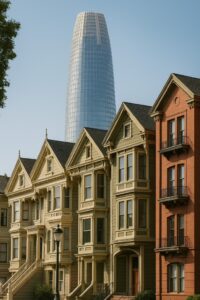Developers often face hurdles when seeking exceptions to city zoning regulations, especially in neighborhoods that balance historic preservation with modernization. A San Francisco real estate attorney can guide clients through complex variance applications, helping projects stay compliant while moving forward. Their knowledge ensures proposals align with both community needs and municipal requirements.
The Role of Zoning Variances in Balancing Historic Preservation and Modernization
Understanding Zoning Variances
Zoning variances play a crucial role in shaping the architectural landscape of a city like San Francisco. Essentially, these variances allow developers to seek exceptions to existing zoning regulations, thereby facilitating the introduction of new structures or modifications that might not otherwise conform to established guidelines. They serve as a bridge between maintaining the aesthetic and historical integrity of neighborhoods and embracing the needs of modern urban development.
Balancing Historic Preservation
Zoning variances provide a practical solution to this challenge by allowing modern construction projects while preserving the historic character of the area. By allowing controlled deviations from typical zoning laws, these variances ensure that new developments harmonize with the existing historic fabric. This is accomplished through stringent assessment processes that weigh the potential impacts on historic sites and cultural landmarks. Developers must demonstrate that their proposals will not compromise the historic essence of the area, often leveraging innovative design solutions to blend the old with the new seamlessly.
Embracing Modernization
While historic preservation is vital, modernization is equally necessary to meet the evolving needs of urban communities. Zoning variances provide the flexibility required for cities to adapt to shifting demographics, changing economic needs, and emerging technological advancements. By facilitating the construction of new infrastructures, such as residential complexes and commercial spaces, variances help to accommodate population growth and stimulate economic development. This dynamic approach supports a city’s growth while ensuring that modern amenities can be integrated without displacing the historical character, resulting in a balanced urban environment that serves both present and future needs.
Community Needs vs Municipal Requirements: Striking the Right Balance
Understanding Community Needs
In San Francisco’s rapidly evolving development scene, understanding what the community values is crucial. Many residents want to see their neighborhood’s historic character preserved, even as they recognize the benefits of innovative modernization. Striking this balance requires more than just good design; it calls for open, ongoing conversations with the people who live there. When developers take the time to listen and incorporate feedback, they not only earn trust but also create projects that feel like an extension of the neighborhood rather than an intrusion.
Navigating Municipal Requirements
At the same time, developers face a complex set of zoning and land-use regulations. These rules encompass everything from building height limits to the use of certain properties, all aimed at maintaining balance within the city. While the process can seem overwhelming, these regulations serve as a roadmap for sustainable, organized growth. For anyone seeking a zoning variance, a clear understanding of these requirements is crucial; every proposal must demonstrate that it aligns with San Francisco’s long-term development vision.
Integrating Community and Municipal Perspectives
The real challenge is bringing community priorities and city requirements together. Developers, often with guidance from experienced real estate attorneys, play a key role in making that happen. Attorneys help translate legal standards into workable strategies while ensuring community concerns don’t get overlooked. When both sides are considered, the result can be creative solutions that respect neighborhood character, satisfy city planning goals, and move projects forward in a way that benefits everyone involved.
Final Thoughts
In navigating the challenging terrain of zoning variances, you hold a critical role in shaping San Francisco’s urban fabric. By understanding the delicate balance between innovation and tradition, you can advocate for developments that respect the city’s rich history while embracing its future potential. Engaging with a knowledgeable San Francisco real estate attorney ensures that your projects not only comply with legal stipulations but also enrich the communities they inhabit. As you move forward, consider how each variance application can contribute to a more vibrant, sustainable, and inclusive San Francisco, ultimately leaving a lasting impact on the city’s evolving skyline.






